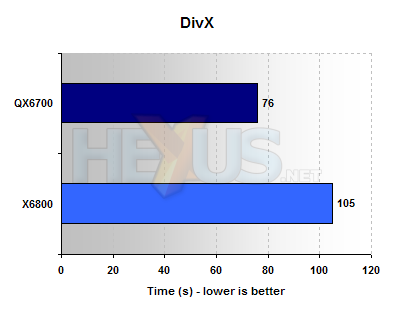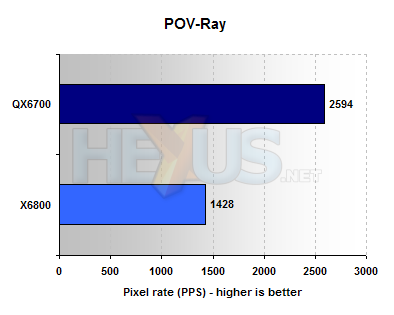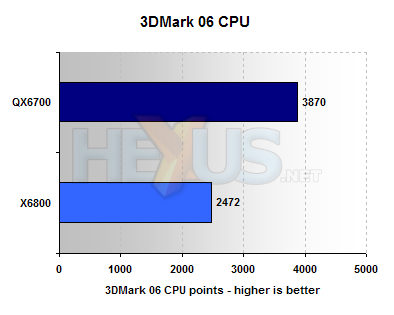Benchmark results
We'll let the results do most of the talking here.

It took the quad core Kentsfield processor 3/4 the time it took the dual core X6800 to encode an HD video file.

In Sony Vegas the test script ran on the QX6700 in two thirds the time it took on the X6800.

60% of the time... you get the idea.

Kentsfield pushed over 80% more pixels out than the X6800 in the POV-ray ray tracing benchmark.

In 3DMark the lead's not quite as much, but Kentsfield is still 1.6 times faster than the Core 2 Extreme dual core.
So, providing your software can leverage all four cores, there will of course be a nice performance boost to be seen with Kentsfield. It's looking good for video editors and content creators. We'll have to wait and see what this means for gamers.
Knowing the kind of lead Kentsfield has over X6800, if you take a look at our Core 2 review, it should give you an idea of how much of an advantage the quad core chip will have over other processors, like the Athlon FX-60.
We'll leave you with one last thought. X6800's two 2.93GHz cores add up to 5.86GHz, while Kentsfield's four 2.66GHz cores sum up to a mighty 10.64GHz. 10GHz... nice. The percentage summed clock difference is also approximately the same as the performance boost seen in POV-ray tracing. If only working out the performance gain to expect was always that simple...













